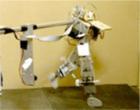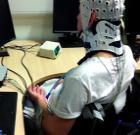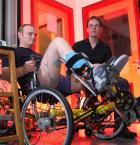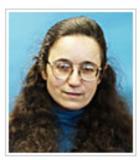Rehabilitation Engineering & Assistive Technologies
The activities at the School of Engineering in the area of Rehabilitation Engineering concentrate on internationally leading research with a focus on clinical application in neurological disorders.
Research areas include functional rehabilitation, neurorehabilitation, rehabilitation and exercise, and human motor control.
Our activities are based on well-established clinical collaborations, for example with the Queen Elizabeth National Spinal Injuries Unit, where dedicated research facilities embedded in the clinical service enables us to conduct research, which is clinically relevant and benefits patients.
As a founding member of the Scottish Centre for Innovation in Spinal Cord Injury (http://www.scisci.org.uk), we are part of a wider network of researchers in spinal cord injury in Scotland. Research questions range from investigations into the fundamental principles of balance control, over clinical applications of electrical neuromuscular stimulation and robotic devices, to clinical applications of Brain Computer Interface technology for neurorehabilitation.
Activities within the research division also include assistive technologies with a particular focus on visual and hearing deficits.
Research topics
Staff
| Dr Henrik Gollee | Dr Marion Hersh |
| Dr Bernd Porr | Dr Aleksandra Vukovic |
| Dr. Morteza Amjadi | Dr. Haotian Chen |
Functional Rehabilitation
Dr. Henrik Gollee, Dr. Aleksandra Vuckovic, Dr. Bernd Porr, Dr. Haotian Chen
Functional Rehabilitation is aimed at developing intervention techniques which lead to functional improvements in patients. Our research focuses on the fundamental principles of human motor control and learning, robotic systems and their application in rehabilitation, and technology for respiratory support based on neuromuscular stimulation.
We are interested in developing a fundamental understanding into how humans control movement and, crucially, the principles underlying learning and adaptation. We apply these insights in the design of rehabilitation systems with a view towards supporting adaptation and learning following neurological impairment, and aim to incorporate our biological insights into the design of engineering controllers that mimic the real-time flexibility of the human nervous system.
Our research has led to the development of a robotic walking systems (Runbot), based on simple, biological inspired, reflex feedback mechanisms. We are incorporating the insight gained from studying these engineering systems into the design of neuromuscular stimulation systems to support rehabilitation of walking after spinal cord injury.
Our research in the area of respiratory support has led to the development of neuromuscular stimulation systems to support ventilation in the acute phase following spinal cord injury and to provide technological advances which provide respiratory assistance in chronic tetraplegia. By helping patients with breathing and coughing, respiratory complications can be reduced and their quality of life increased.

Neurorehabilitation
Dr. Aleksandra Vuckovic, Dr. Haotian Chen
Neurorehabilitation aims to aid recovery from a nervous system injury and to minimize and/or compensate for any functional alterations resulting from it. Neurorehabilitation relies on patient-cooperative strategies in which they are actively involved.
Our research relies on Brain Computer Interface (BCI) technology for inducing long lasting neuromodulatory effects, to treat primary and secondary consequences of Spinal Cord Injury (SCI). We use BCI in combination with Functional Electrical Stimulation to promote functional rehabilitation of the hand in patients with a high level spinal cord injury. We also apply BCI technology for ‘brain training’ through neurofeedback, i.e. voluntary modulation of brain waves without a predefined verbalized strategy.
We developed and clinically tested neurofeedback protocols for treatment of Central neuropathic pain and are looking into applications of neurofeedback for treatment of spasticity following SCI. We are working towards developing inexpensive BCI/neurofeedback applications for home use, combined with computers or mobile phone technology.
Our fundamental focus is centered on defining brain signatures of neurological deficit treated by neurofeedback and understanding complex brain dynamic of ‘brain training’ . We are combining electroencephalogram (EEG) with functional magnetic resonance imaging (fMRI), to develop a hybrid system for analyzing and modulating nerve activity in real time.

Rehabilitation and Exercise
Our activities are concerned with the development of systems to allow functional training and exercise for people with spinal cord injury, using lower-limb paraplegic cycling, assisted arm-cranking and activity therapy with robotic assistance.
Through partnership with Hasomed GmbH (Germany) and Anatomical Concepts (UK) Ltd., we have brought novel clinical products to market, including the RehaBike (www.rehabike.de), a recumbent tricycle system which allows people with paraplegia to cycle using functional electrical stimulation (FES) of the paralysed leg muscles, offering them an attractive way to exercise and to reduce the secondary effects of spinal cord injury.
In addition to systems for exercise, we are developing expertise in robotic assistive technology, such as robotic treadmill systems, to support the rehabilitation of SCI patients, both during the acute and the chronic phase of their injury.

Assistive Technologies
Assistive technology is a generic or umbrella term that covers technologies, equipment, devices, apparatus, services, systems, processes and environmental modifications used by disabled and/or elderly people to overcome the social, infrastructural and other barriers to independence, full participation in society and carrying out activities safely and easily.
Our research is focused on the following areas:
- Communication glove for deafblind people
- Deafblind people using a deafblind manual alphabet to communicate can spell onto the glove, transmitted to a small screen or receive messages as vibrations
- Travel support apps and personal assistants on mobile devices
- Functions include navigation to destination, location of transport facilities, shopping assistance, reading street names and notice boards, points of interest, and location and context based reminder alerts.
Robotic Guide for Blind People
A robotic guide would have the advantages of a guide dog without the disadvantages (for those who do not like dogs) of needing to care for the dog and provide additional functions.
Leisure Activities for Blind People
This includes cycling in quiet areas, lane swimming and table games such as billiards and snooker. All these projects raise challenging issues of obtaining and providing information to the blind or partially sighted user. For example, in ball games for blind people, the ball can contain a noise maker which indicates the location to the player as it moves.


